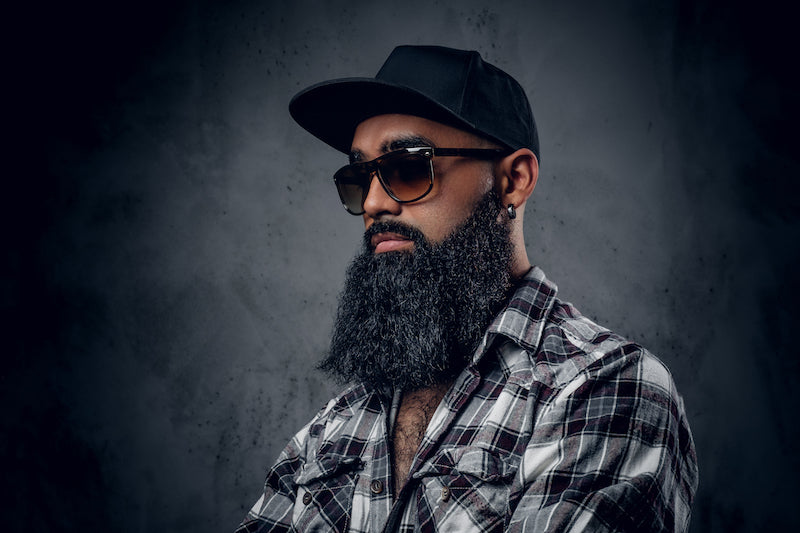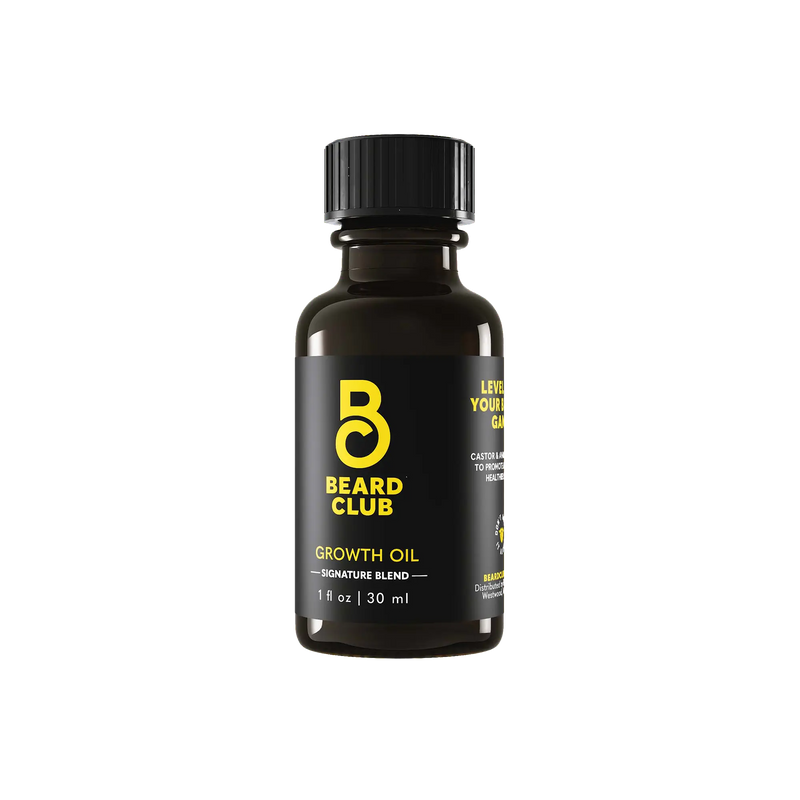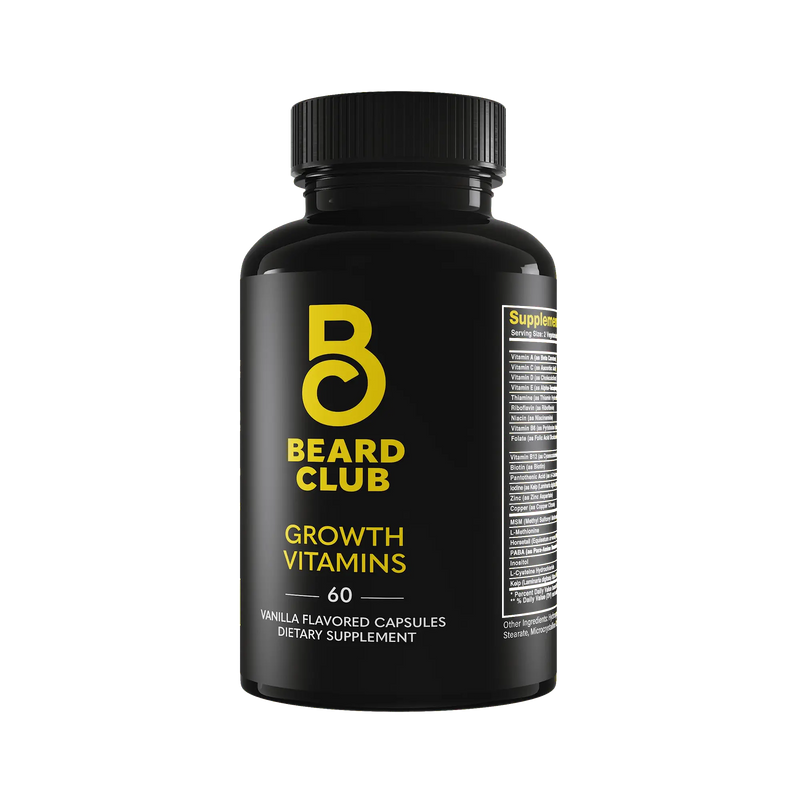Types of Facial Hair: How To Groom Straight, Wavy, & Curly Beards
Facial hair says a lot about a man. It's more than just a style statement — it's a manifestation of your personality, a testament to your individuality. But with the multitude of beard styles out there, deciding which one to sport can be daunting. Plus, you have to make sure you’re picking one that pairs well with your facial hair type. That's where we come in.
Facial hair comes in all shapes and sizes, each with its own unique charm and grooming requirements. From the bold full beard to the crisp goatee beard, rugged stubble beards to the sophisticated Van Dyke, the possibilities are endless. And let's not forget about the mustache styles — the iconic handlebar, the classic chevron, or the playful stache, each adding a dash of charisma to your face.
On top of all that, the texture of your beard hair plays a pretty big role in the methods you use to care for your beard. Curly hair, wavy hair, straight hair, hair that stubbornly refuses to grow — these are all possible textures that you might come across when you’re finally growing out your facial hair.
Let’s get down to discussing how to care for each and every type of facial hair.
What Are the Different Types of Facial Hair?
We get it — you’re more interested in figuring out whether or not you’ll be able to grow the mutton chops you’ve been longing for right now. But before you can decide on the best beard style for you, you need to know what kind of beard hair you have and how to care for it. Let’s get into it.
Straight Beard Care
A straight beard hair type will grow the longest and the fastest. This should conjure up images of Vikings and long-bearded wizards. Straight beards are usually about three times as long as an equally timed curly beard. The hairs won’t loop in on themselves. Instead, they hang long and straight, so it looks like you have some extra length.
A straight beard presents you with some unique benefits, but you need to look out for a few things as well. In the early stages of growing your beard, you’re more likely to have to contend with some patchy beard areas. These thin spots take some time to fill in while you grow.
Remember that your face where that beard is growing is a three-dimensional object. You’ve got hairs growing from your cheeks, chin, and neck. As your beard grows downwards, not every part of your facial hair will be the same length.
Here’s what you can do to make the most out of a straight beard:
- Use a beard comb instead of a brush.
- Condition with a beard growth oil to fill in quicker.
- Trim your chin and neck to align with cheek growth.
Straight beards often outgrow other types of beards. While you won’t ever have the curls, long beard lengths come more naturally to your beard type.
Wavy Beard Care
A wavy beard is the in-between stage between straight and curly. The hair follicle is curved once, giving it that wavy flow.
Embrace your natural beard as it grows out more — it can be an interesting look when cared for correctly. Sometimes, your beard will wave out on your chin, giving you an asymmetrical look. Other times, it may become a bit out of control and need taming.
- Use a beard brush gently to avoid tearing out hairs.
- Set your chosen style in place with beard balms or wax, whether you’re rocking a chinstrap or an anchor beard.
- Untangle rough spots with a beard comb.
- Don’t force your beard into unnatural positions. Instead, let it grow where it wants to go.
After about a month of growth, you’ll begin to see if you have a wavy beard or not. The first wave should start coming in after about half an inch or so.
Curly Beard Care
A curly beard has the most spin to it, and the individual strands look like a fully loaded spring. The spiral hairs will, most of the time, create a thicker look as well. Curly beards require more upkeep, as there is a greater risk of tangling.
After a month or so, you’ll know how curly and thick your beard can grow. What it may lack in length prowess, it makes up for in sheer thickness. Curly beards need more care the longer they get.
- Use beard oil regularly to stop the beard from drying out.
- Regularly brush with a boar bristle.
- Gently detangle without ripping hairs out.
- Avoid unnatural straightening methods.
All beards have to contend with beard bedhead at some point, and curly beards, in particular, tend to get very wild in the morning. Sometimes, the only thing you can do is take a shower or wet the beard down.
How Do Genetics Affect Your Facial Hair Type?
Genetics play a crucial role in determining your beard's growth pattern, density, color, and texture. For example, some men might find their beards growing in patchy or uneven due to genetics, while others have effortlessly full, thick beards.
Different types of beard hair, such as straight and wavy, are also determined by your genes — for example, black men are more likely to have curly beards. All types of beards generally grow at about the same rate — roughly half an inch per month.
Varying Follicle Composition
All types of beards generally grow at about the same rate — roughly half an inch per month, whether it’s straight or curly. However, curly beards grow in loops or sprocket-like springs, while straight beards will just grow downwards, which is why it might seem like straight beards grow faster.
Most guys have varying hair follicle shapes on their body. That’s why the hair on your head could be curly while your beard is straight.
Different ethnicities contend with varying beard types as well. People of Asian descent tend to grow round hairs, while Europeans often have a more rounded oval follicle, and people of African descent grow closer to a flat oval. For the most part, the overall thickness and constitution of your beard depend on whether it’s straight, wavy, or curly.
What Tools Do You Need To Groom the Different Types of Facial Hair?
Now that we've discussed various types of facial hair, let's talk about how to groom and maintain them. Remember, a well-groomed beard is a happy beard.
Choosing the right tools is the first step in your grooming journey. Start with a quality beard trimmer to maintain the length and shape of your beard. Most trimmers come with different length settings, providing versatility for various styles.
A beard comb or brush helps distribute natural oils, keeping your beard looking healthy and well-maintained. It also helps with styling and detangling your beard, especially for longer beard styles.
Grooming also extends to moisturizing the hair and taking care of the skin beneath the beard. Beard oil and beard balm provide much-needed moisture to nourish your facial hair and the skin underneath. They help hydrate the skin, reduce beard itch, and make your beard look fuller and shinier, which is especially important if you have wavy or curly facial hair.
If you’re sporting a mustache on your upper lip, use beard trimming scissors and a comb to keep it neat. Use mustache wax for shaping and holding the style, especially for styles like the handlebar.
It's also crucial to keep your beard clean. Washing facial hair regularly with a gentle beard shampoo and following up with conditioner removes dirt and excess oil, keeping your facial hair fresh and healthy.
Final Thoughts
The right knowledge, coupled with proper grooming practices, can help you achieve a beard that looks great and reflects your personality and style.
From the circle beard to the soul patch, each facial hair style and texture brings something different to the table. Experiment with different styles, find the one that suits you best, and wear it confidently.
With a great beard comes great responsibility. Many of these problems and new ways of grooming tend to work themselves out the longer your beard grows. Keep on growing and applying these beard care tips along the way. You’ll be a master of your beard no matter your type! And remember, no matter what style you choose, The Beard Club is here to help you on your journey
Sources:
Beard Maintenance Tips | Healthline
What Can't I Grow a Beard | Healthline



















